Knit socks are my favorite things to make, and I love snuggling up in them at the end of a long day or bundling up when it’s particularly chilly out. Unfortunately, because of how we use socks, they are sometimes more prone to pilling than other knits are. That’s why I figured this guide to handling pilling on knit socks might be helpful.
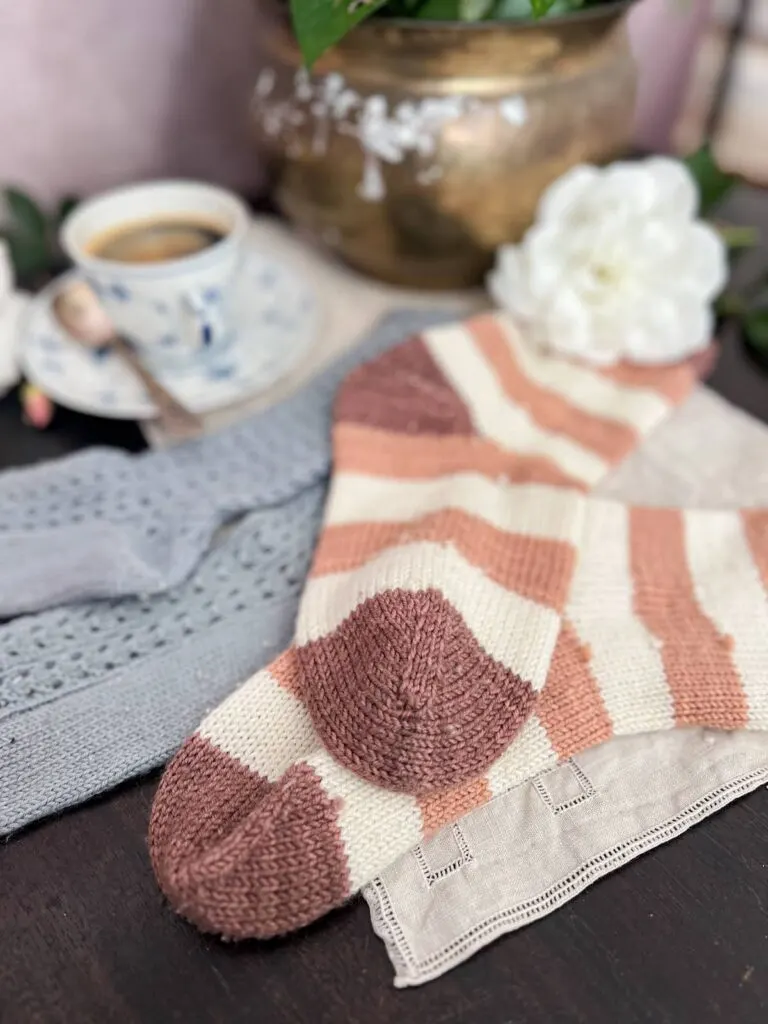
Causes of Pilling on Knit Socks
There are three main causes of pilling on knit socks, and usually they work together in concert. Pilling on your knits can be a result of fiber content, yarn construction, and/or friction. Let’s take a look at each of these in turn.
Fiber Content
Sometimes, a yarn will pill more easily because it is made of a fiber that has a shorter staple length. Certain kinds of cottons and animal fibers will be more likely to pill because the fibers are short.
Longer fibers can wrap around each other in the spinning process, which will prevent them from popping out of the yarn later on and forming pills. Shorter fibers, however, can’t do that.
As a result, when you work with a fiber that has a shorter length, it sometimes pops out of the yarn and can become very fuzzy. Eventually, that leads to pilling.
So how do you know which fibers are more likely to pill? It’s important to look at the staple length. Take a look at this great explanation of different wool breeds and their staple lengths. The longer the staple length, the less likely it will be to pill.
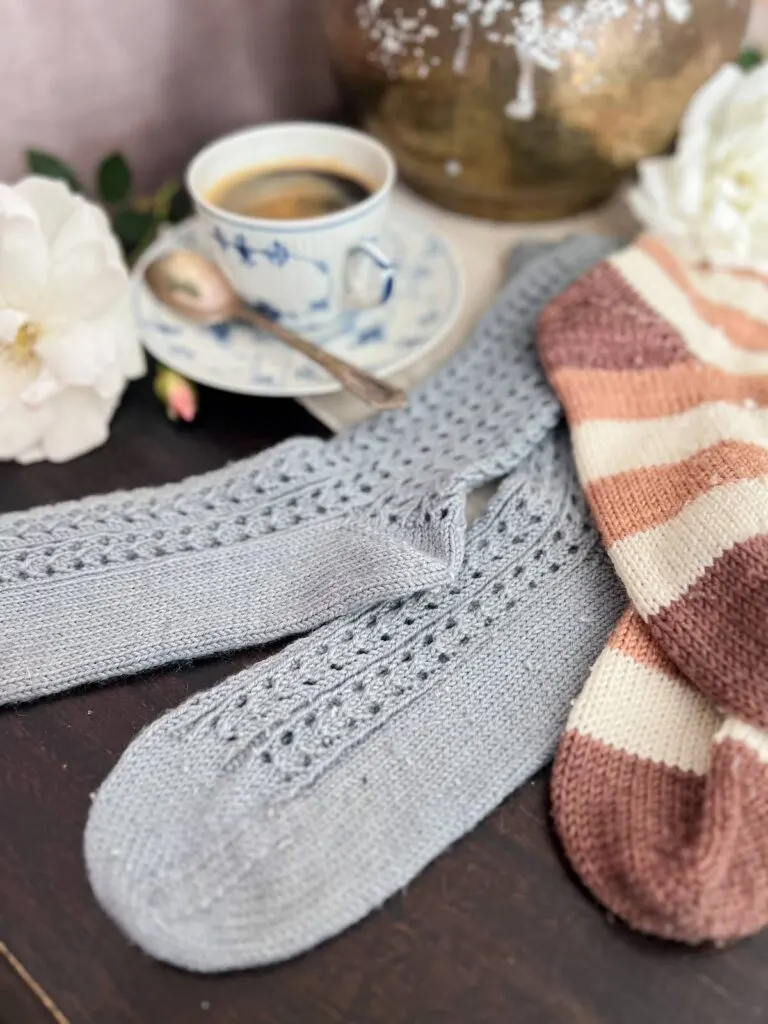
Yarn construction
Another factor that contributes to pilling on your hand knit socks is the construction of the yarn you used. The more tightly spun the yarn, the less likely it is to pill, as a general rule.
For example, most single-ply yarns are not well suited to making socks, even if they have a little bit of nylon mixed in. That’s because, even though the nylon does add some durability, the construction of the yarn is really loose.
When you have only one ply of loosely twisted yarn, it doesn’t have enough structural stability built into the yarn itself. If you want a really durable yarn, you should look for a yarn with multiple plies in it that has been spun tightly.
Two-ply is very common for sock yarn, but I love a nice, plump, three-ply or four-ply yarn when I can get one.
Bottom line: those single-ply yarns feel wonderfully soft, but they just aren’t going to be durable enough for heavy use in a sock. Save them for mitts, hats, and shawls.
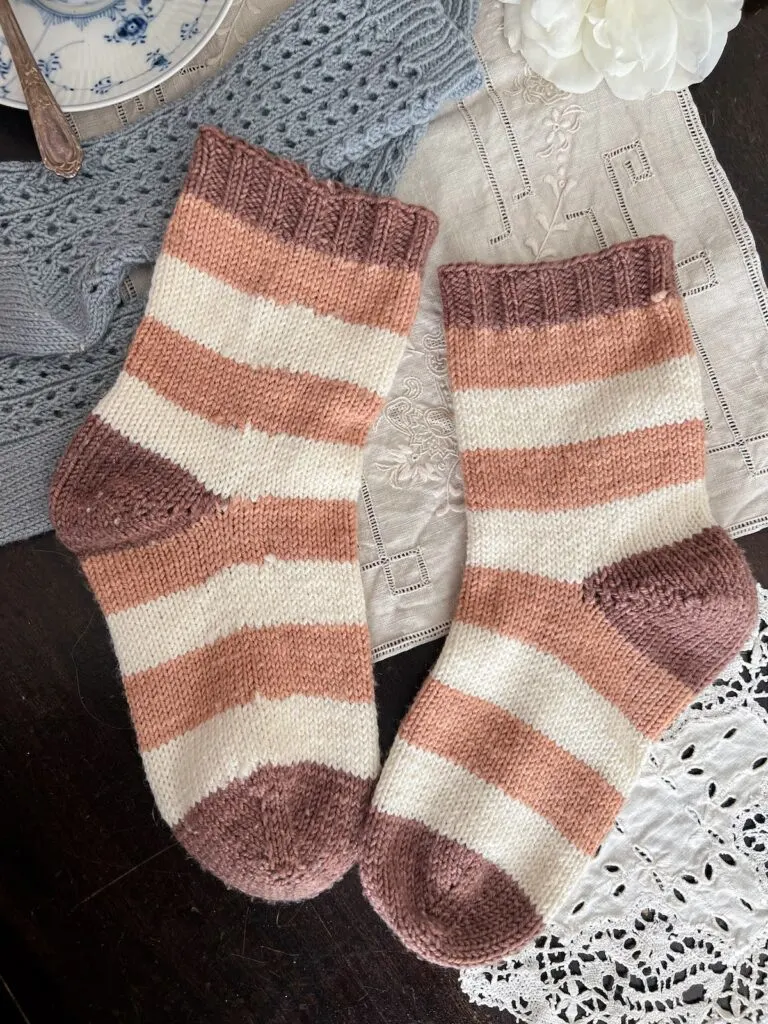
Friction
With the exception of the underarm area on a sweater, I can’t think of a knit item that gets more friction than a pair of socks.
Knit socks are usually worn inside shoes. Whether your shoes fit snugly or loosely, they are going to be rubbing against your socks, especially at the balls of your feet and the heels.
Even if you don’t wear your socks with shoes, you’re still going to be rubbing your feet against the floor as you walk. All of that rubbing helps loosen the fibers in the yarn you used to make your sock, which means they are more likely to pill as fibers pop loose.
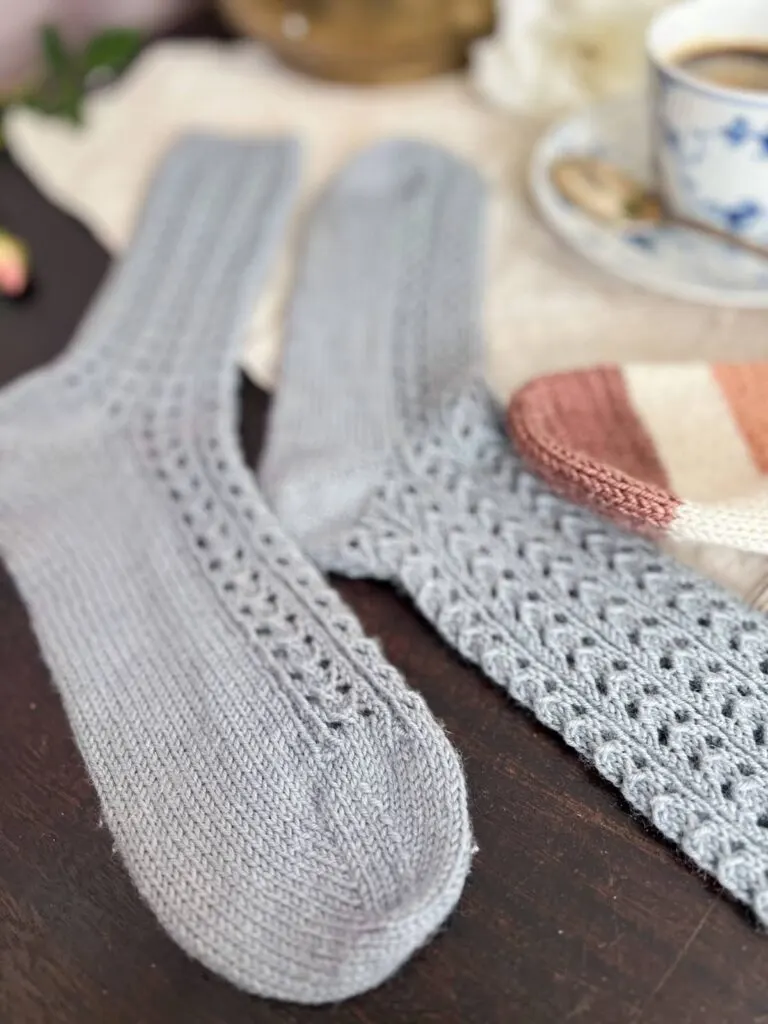
Why Should We Remove Pilling on Knit Socks?
There are a couple reasons you might want to remove the pilling on your knit socks. First, large pills can become uncomfortable. If they build up along places where you feet meet your shoes, that puts pressure on your feet in small spots. They can feel like tiny pebbles inside your shoe.
Second, pills act like dust catchers. Have you seen those mop-slippers some of the people on CleanTok wear? Yeah. The pills kind of work the same way. The more pilled your socks are, the more they’re going to attract and hold onto dust and debris.
Finally, pilling can affect the durability of your knit socks. As pills form and grow, they can create more friction points that cause even more pilling. In other words, where there’s one pill, there will soon be more, and that pilling can eventually harm the integrity of your sock fabric.
How to Remove Pilling on Knit Socks
This section contains affiliate links, which means if you choose to buy something through those links, I’ll receive a small commission at no extra cost to you. I will always identify affiliate links for you by putting “(affiliate link)” next to them. Thanks for supporting my work!
I’ve tried a few different tools you can use to remove pilling on knit socks. Different people swear by different tools, so it’s worth experimenting to see which you prefer. Here are the three I’ve used the most.
Lint Shaver
Option one is to use a lint shaver, and that’s actually what I’ve used to de-pill the socks in this post. I have one from KnitPicks (affiliate link) that does the job pretty well, but lint shavers have a couple drawbacks. First, they’re noisy. Because they’re battery-operated and have a tiny motor, you’re going to hear a lot of buzzing from them as you work. Second, they operate by whirling three little blades very fast, like a helicopter. Although those blades are behind a screen that theoretically shields your knits, some people have caught their knits in a shaver and made holes.
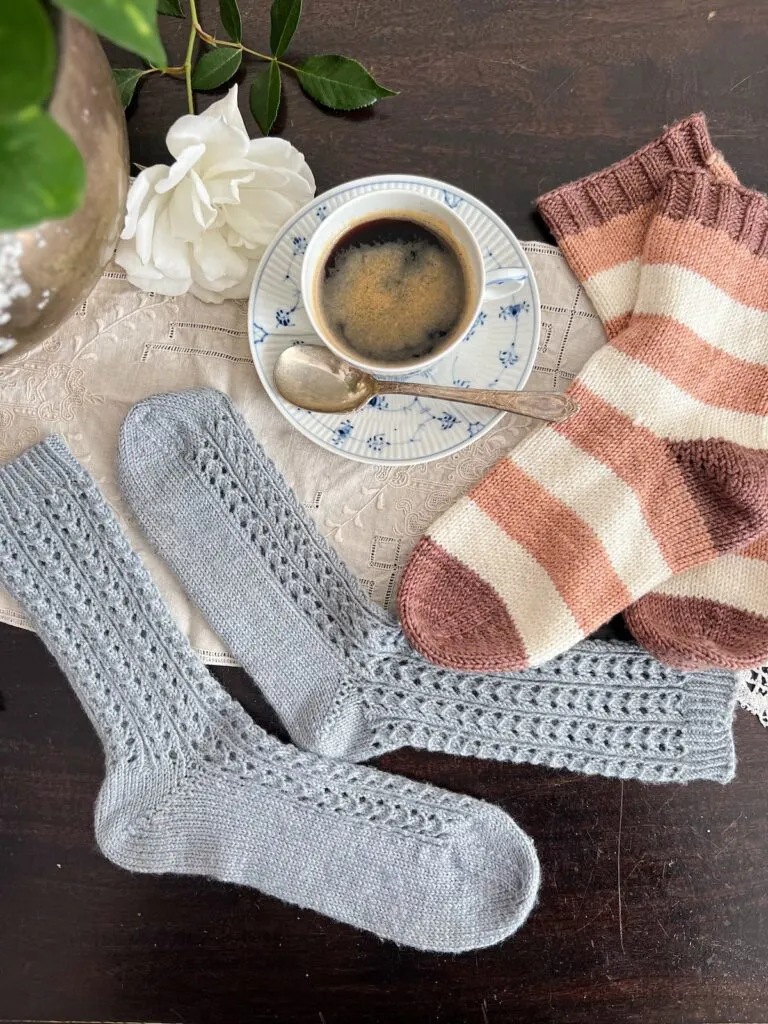
Sweater Comb
Option two is to use a sweater comb (affiliate link). Sweater combs are a classic option that use just a rough texture and the power of your own hand swiping it across the knit item. The shape is a little underwhelming in the hand, though. If you’re sensitive to textures or ridges or other tactile inputs, that’s worth thinking about.
Gleener
Option three is something like the Gleener (affiliate link). It has an ergonomic handle that gives you a little more control over how much pressure you apply. It also has interchangeable plates with different textures for longer and shorter fibers. The Gleener folks gave me one to test out last summer, and I’ll be honest, I’m a fan.
With the right tools and some willingness to experiment, your precious socks will be pill-free in no time. Do you have a technique for removing pills that you love? What about a favorite sock yarn that never pills in the first place? I’d love to hear more in the comments!
And if you’re curious about which sock yarns I recommend, don’t miss my top 5 sock yarn recommendations.
LA
Tuesday 7th of March 2023
So helpful, ty!
Mari
Thursday 2nd of March 2023
This is the article I didn't know I needed. I love crochet and knitting, but caring for my items is a drab. Thank you for the info.
Lauren Rad
Thursday 2nd of March 2023
I'm so glad it was helpful to you! Pilling really is a pain, but a little care goes a long way to reducing the effects.
Z.
Wednesday 22nd of February 2023
Wow. It's early in the morning here, and I am not the type of impulsive buyer, but I must say that I am not fully satisfied with my lint shavers (taking to long to remove lint from sweaters and acrylic knot dresses) and I consider seriously buying a gleener through your link. I will take a bit more info first.
Thank you!
Lauren Rad
Thursday 23rd of February 2023
If you end up giving the Gleener a try, I hope you'll let me know how you like it!
Mary Ann Olesen
Wednesday 22nd of February 2023
@Z., I’d totally recommend The Gleener! My daughter bought me one for Christmas a few years back and I love it! Works really well! Have a great day!